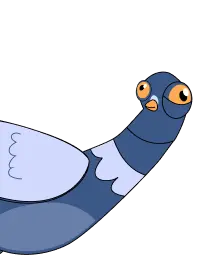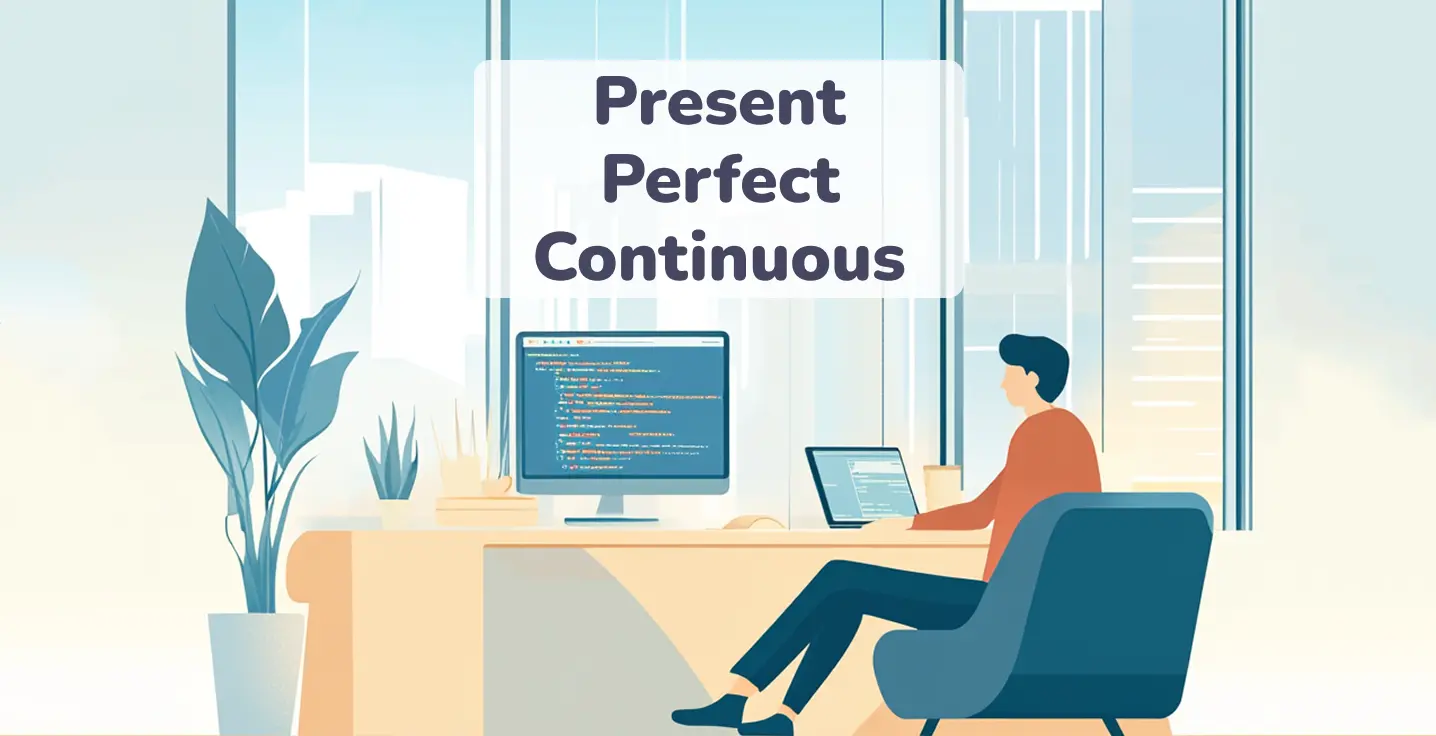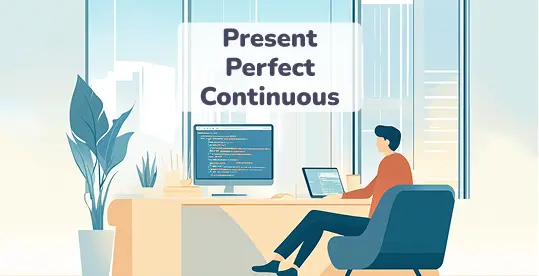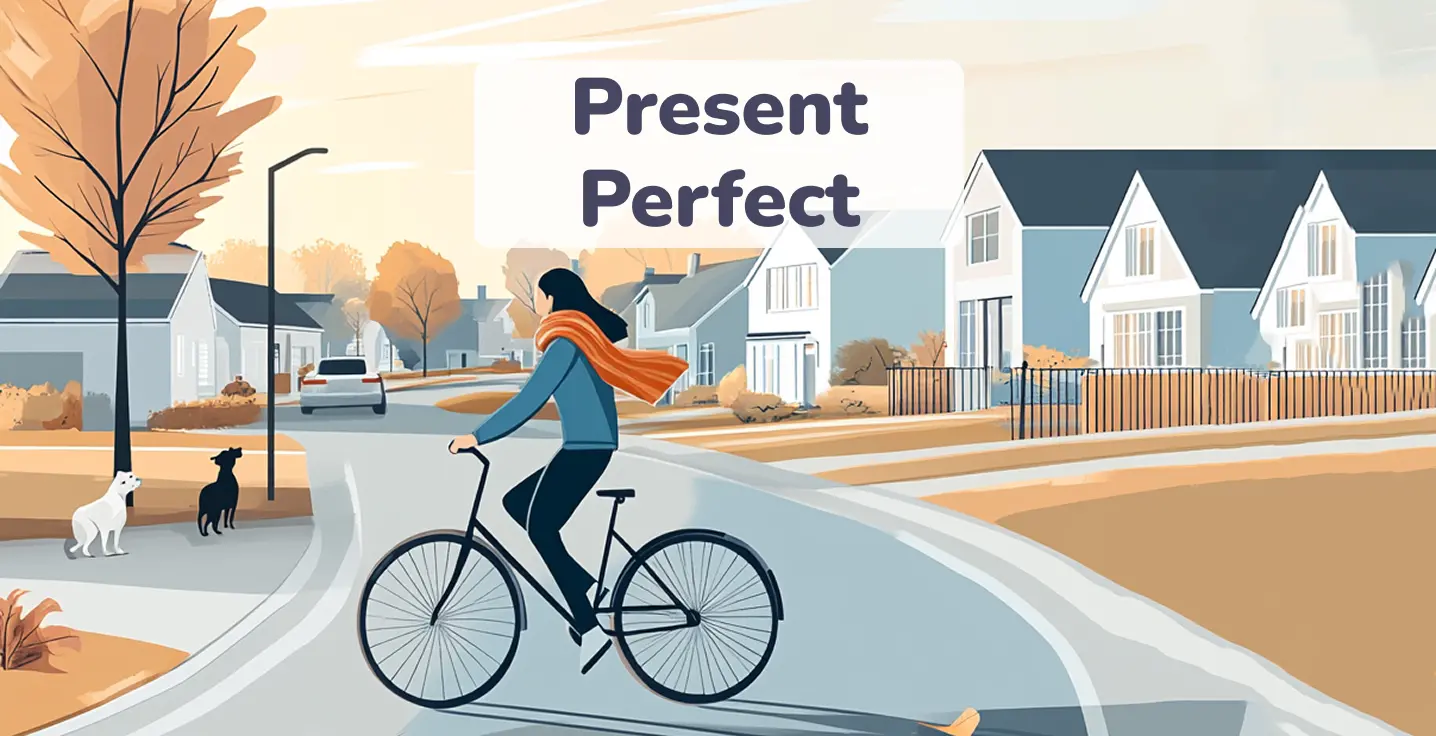What is the Present Perfect Continuous Tense?
The Present Perfect Continuous tense definition is a simple one, described as the way to tell about your or others’ actions that have begun in the past and have not finished yet, but left visible or measurable results in the present.
Present Perfect Continuous tense usage is not limited to expressing your experience, but you will also be able to analyze songs, understand movies in English, and communicate with more engagement.
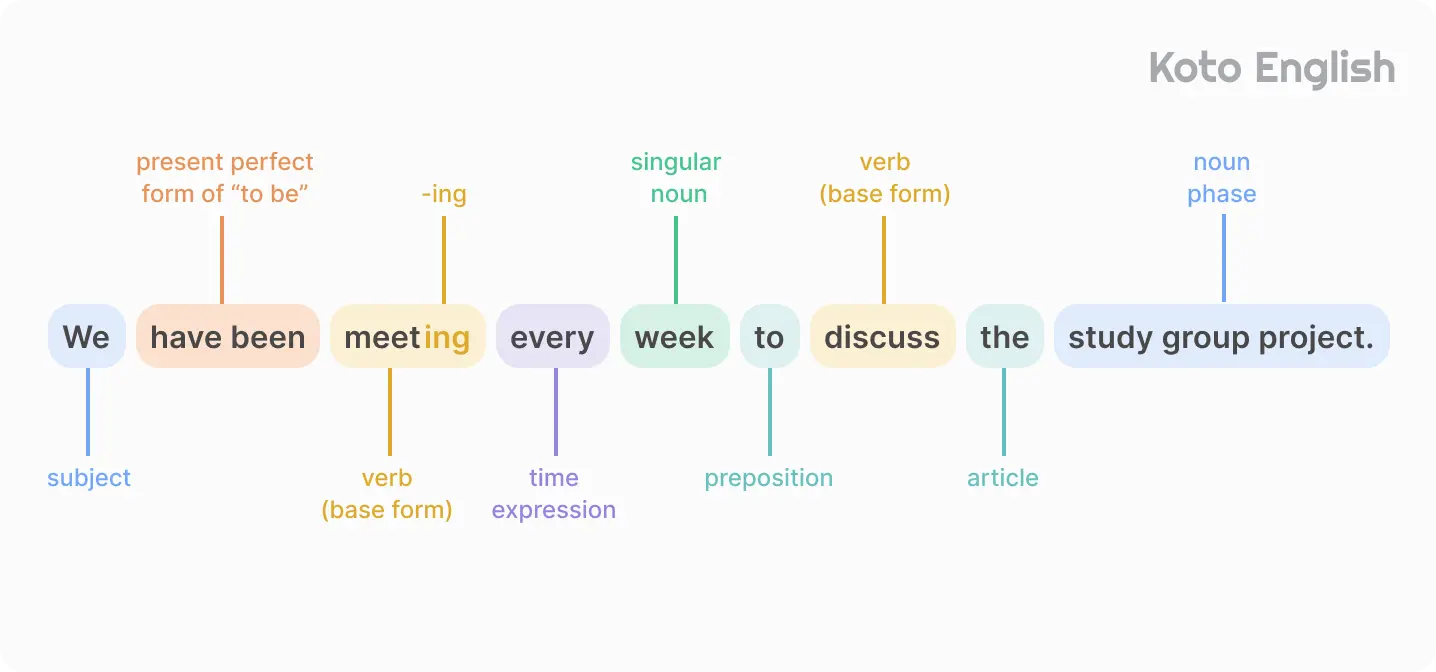

To understand it more deeply, let’s review the practical expressions.
Present Perfect Continuous tense examples:
Level up your English with Koto!
Present Perfect Continuous tense formula
The Present Perfect Continuous structure is formed with have/has been with a verb in its -ing form.


Let’s have a look at the Present Perfect Continuous formula in usage:
| Subject | Full form | Short form |
|---|---|---|
| I |
I
|
I
|
| You (singular) |
You
|
You
|
| He |
He
|
He
|
| She |
She
|
She
|
| It |
It
|
It
|
| You (plural) |
You
|
You
|
| We |
We
|
We
|
| They |
They
|
They
|
When to use the Present Perfect Continuous?
The Present Perfect Continuous helps you to describe something that took place in the past and is happening till now, or when the results can be presented. To explore more detail, we will provide an overview of the usage in every situation.
Examples of Present Perfect Continuous tense:
| Usage | Example |
|---|---|
| Actions that keep going up to the present |
He
|
| Actions that have just finished, but you can review the results |
I
|
| Repeated actions over time |
I
|
| Expressing feelings about duration |
My brother
|
Present Perfect Continuous timeline across time markers:
| Time indicators | Examples |
|---|---|
| for |
I
|
| since |
They
|
| this week/month/year (unfinished timeframes) |
He
|
| recently/lately |
I
|
| all day/evening/lunch |
It
|
Sometimes, learners misunderstand the usage of for and since, so here’s a reminder that for is used for the duration, while since indicates when the action started.
How to use the Present Perfect Continuous Tense?
The Present Perfect Continuous tense structure is well-known for you, and you can form sentences with the usage of have/has been + verb with -ing. For now, let’s discover what you need to ask questions and express negation with this tense.
Questions of the Present Perfect Continuous
In this case, you need to put have or has at the forefront, add been and the verb with -ing form, and that’s it, your question is ready to be answered! Here’s the formula of the Present Perfect Continuous tense in question form.
Yes/No questions


Let’s refer to some Present Perfect Continuous examples with simple answers:
| Question | Answer |
|---|---|
|
|
Yes, you
|
|
|
Yes, he
|
|
|
No, we
|
Wh-questions

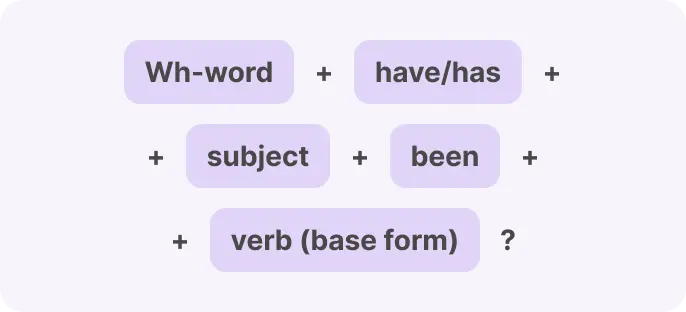
Here, you can check the examples of more complex questions:
| Question | Answer |
|---|---|
|
|
I
|
|
|
You
|
|
|
He
|
Enjoy personalized learning!
Negation of the Present Perfect Continuous
Sometimes, you need to talk about something that hasn’t been happening during conversations, placing not between has/have and been, and the -ing form of the verb. Present Perfect Progressive tense also has pretty advanced grammar, so you will show your skills to the professor or your companion.


Check the sentences used to describe situations when you or other people disagree with the things said:
| Full form | Short form |
|---|---|
|
I
|
I
|
|
Our teacher
|
Our teacher
|
|
They
|
They
|
|
I have no clue, I
|
I have no clue, I
|
|
My eReader
|
My eReader
|
|
She
|
She
|
Common mistakes with the Present Perfect Continuous in English
Everyone makes mistakes, that’s true, and there’s nothing new, so we have prepared a list of misunderstandings that are common for all learners, as the Present Perfect Continuous form is more complex.
Misplacing have and has
Sometimes, students can twist these two forms, and the result is a mistake that is not critical but sounds unnatural in English.
|
He have been working with me all day.
|
He has been working with me all day.
|
|
It have been snowing heavily this week.
|
It has been snowing heavily this week.
|
|
You has been planning a trip this month.
|
You have been planning a trip this month.
|
Remember to use have with I/we/they/you, and has with he/she/it.
Using the wrong time expression
In previous articles, you can review tense markers for other tenses. In the part of ‘What is Present Perfect Continuous?’ We also determined points of time that can be used.
|
I have been learning English yesterday.
|
I have been learning English lately.
|
|
He has been taking care of his mom on Monday.
|
He has been taking care of his mom this month.
|
|
The students have been struggling with homework tomorrow.
|
The students have been struggling with homework since this semester began.
|
Specific timeframes like yesterday are not standard for Present Perfect Continuous tense sentences.
Using stative verbs
It’s better not to use verbs that describe your feelings, statements, etc., with Present Perfect Continuous.
|
I have been loving his album for 10 years.
|
I have loved his album for 10 years.
|
|
He has been liking football since high school.
|
He has liked football since high school.
|
|
She has been believing in me lately.
|
She has believed in me lately.
|
Stative verbs are used in the simple form only, so it’s better to write them in the Perfect Simple tense.
Summary
Wrapping up this topic, you can use the Present Perfect Continuous tense fluently, just by adding have/has been to the verb with -ing and using some details for a more persuasive context. Keep practicing, and you will become an English guru!
Present Perfect Continuous tense FAQ
There are many of them, for example, for, since, recently/lately, the whole evening/morning/afternoon, all day/night long, etc.
We
For the negative ones, put the subject first, add have/has not, and add the verb in the -ing form, such as:
He
Yes, you can, especially if it’s an informal conversation, like in messages or emails. Such sentences are formed like this:
She
You’ll definitely come across these confusions while studying English, and the best way to overcome them is by learning some tips and tricks. That’s why we are here, with a short list of the mistakes and correct forms. Typically, the most confusing parts are:
- Misplacing have and has:
|
She have been doing this all morning.
|
She has been doing this all morning.
|
- Putting the wrong time expression:
|
I have been listeting to this band yesterday.
|
I have been listening to this band lately.
|
- Choosing stative verbs:
|
I have been liking skiing since I was a child.
|
I have liked skiing since I was a child.
|
